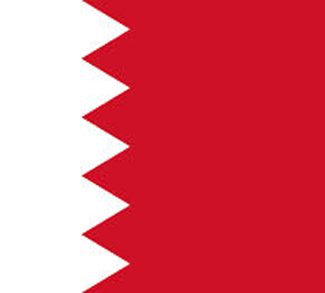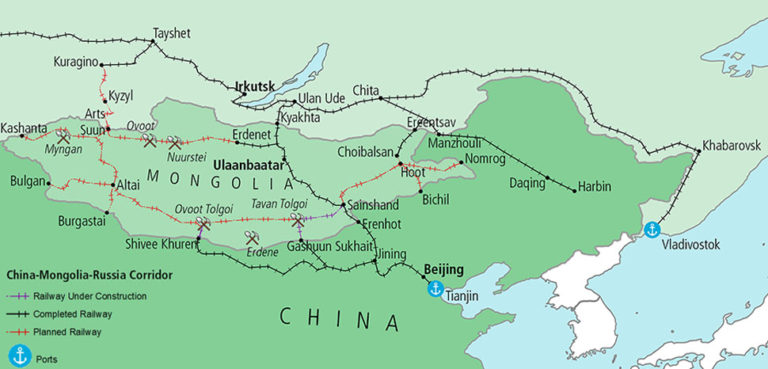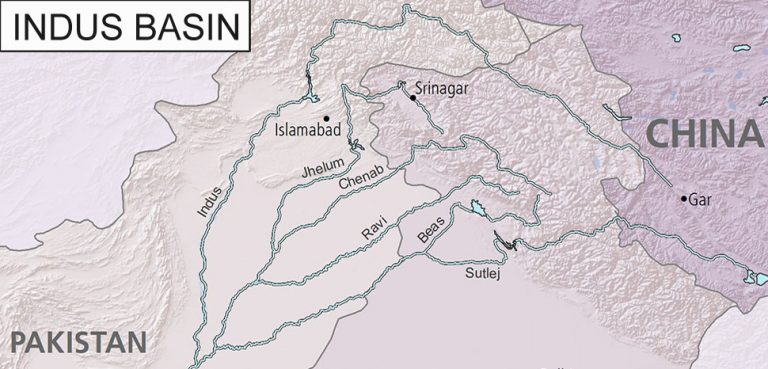The Middle Corridor, also known as the Trans-Caspian International Transport Route (TITR), is quickly becoming a key trade link between Western China and Europe, bypassing both Russia’s Northern Corridor and the Suez Canal. This network of rail, road, and maritime transport offers a shorter and more efficient trade route. Its importance has grown significantly, especially in light of Russia’s invasion of Ukraine, making it an appealing option for international commerce. While the corridor has expanded rapidly, it still faces infrastructure, operational, and geopolitical challenges that require ongoing investment and collaboration. This article explores the structure, strategic importance, challenges, and future potential of the Middle Corridor within the evolving landscape of Eurasian trade.
The Vision of the Middle Corridor
The Middle Corridor incorporates rail, road, and maritime transport, linking major economic centers across China, Central Asia, the Caucasus, and Europe. The route begins in China, where goods are loaded onto rail freight services originating in industrial hubs like Xi’an, Chongqing, and Urumqi. These shipments are transported westward through Kazakhstan, utilizing an extensive railway network that connects key transit hubs such as Dostyk, Altynkol, and Khorgos.
Upon reaching the Kazakh Caspian Sea ports of Aktau and Kuryk, cargo is transferred onto maritime vessels that cross the Caspian Sea, a crucial yet challenging segment of the corridor. The ports of Aktau and Kuryk play a significant role in facilitating trade between Central Asia and the South Caucasus, but limitations in shipping capacity, outdated port infrastructure, and weather-related disruptions pose operational hurdles. Investment in port expansion, automation, and logistics services aims to mitigate these challenges and increase the efficiency of trans-Caspian shipments. Yet despite these ongoing improvements, the Caspian maritime segment continues to be a logistical bottleneck.
Once across the Caspian Sea, goods arrive at Baku/Alat in Azerbaijan, where they continue their overland journey toward Europe. Azerbaijan’s relatively modern rail infrastructure, including the Baku International Sea Trade Port and the Baku-Tbilisi-Kars (BTK) Railway, facilitates seamless transit. The BTK Railway, which connects Azerbaijan, Georgia, and Turkey, is itself a crucial link in rail connectivity, enabling the swift movement of goods into Turkey and beyond into European networks. Originally designed to handle 6.5 million tons of freight annually, the BTK Railway is set to increase its capacity to 17 million tons by 2034, further strengthening the Middle Corridor’s logistics backbone.
The Middle Corridor’s ability to integrate rail, maritime, and road transport networks offers a degree of flexibility, allowing cargo to be rerouted based on demand fluctuations, seasonal disruptions, and shifting geopolitics. Logistics hubs, customs coordination, and trade facilitation initiatives are being actively developed to improve efficiency and enhance the competitiveness of the corridor.
A Strategically Significant Trade Route
The Middle Corridor has emerged as the fastest and most direct trade route between China and Europe, reducing distances by approximately 2,500 kilometers compared to the Northern Corridor. Transit times range from 10 to 15 days, significantly improving upon traditional routes, which required anywhere from 15 to 60 days. By circumventing Russia, the corridor offers an opportunity to enhance supply chain resilience and mitigate risks associated with trade restrictions.
The economic significance of the corridor continues to expand, with trade volumes skyrocketing in recent years. Over the first 11 months of 2024, 4.1 million tons of cargo moved through the corridor, representing a 63% year-over-year increase. Increased trade along the corridor stimulates industrial growth, job creation, and infrastructure development in transit countries, thereby strengthening regional economies and reinforcing positions along the global supply chain.
Geopolitically, the corridor offers an appealing alternative to Russia’s transit infrastructure, particularly amid Western sanctions against Moscow. The European Union is actively investing in transport infrastructure within the region, viewing the corridor as a means of counterbalancing Russian and Chinese influence. The investments are intended to reduce dependency on Russian-controlled trade routes, particularly in energy transit and freight logistics. The European Bank for Reconstruction and Development (EBRD) and the Asian Development Bank (ADB) are among the key financial institutions supporting infrastructure improvements in the Middle Corridor.
Turkey in particular is solidifying its status as a strategic transit hub and leveraging deep economic and cultural connections with Central Asia. As a bridge between Asia and Europe, Turkey’s role in the corridor enhances its geopolitical standing and strengthens its influence in regional trade and economic diplomacy. Through the Baku-Tbilisi-Kars Railway and Marmaray Tunnel, Turkey provides seamless connectivity to European markets, bypassing traditional trade routes to the north.
Meanwhile, China views the Middle Corridor as an extension of its Belt and Road Initiative (BRI), reducing reliance on Russian transit routes while improving its access to European markets. By diversifying trade routes, China aims to increase its export efficiency and expand economic engagement with Central Asia, the Caucasus, and the EU. The development of smart logistics hubs, rail terminals, and customs digitization along the corridor is further integrating China’s western regions into global supply chains, accelerating economic growth in these previously underdeveloped areas.
As geopolitical tensions continue to reshape global trade networks, the Middle Corridor has emerged as a favored alternative to traditional routes. Its ongoing development can be expected to enhance Eurasian connectivity and global supply chain security, all the while developing and diversifying the economies along its path.
Challenges & Constraints: Can the Vision be Realized?
Several challenges stand in the way of the Middle Corridor realizing this potential, however. One overriding concern is the limited transport capacity of the route at present. Rail networks in Azerbaijan and Georgia are struggling with shortages in locomotives and wagons, leading to congestion. Maritime transport across the Caspian Sea is another severe bottleneck due to the limited vessel availability, outdated port infrastructure, and slow cargo-handling processes. Moreover, ice formation in winter and strong winds occasionally halt operations, further decreasing efficiency. The corridor also lacks modern logistics hubs, which are crucial for ensuring efficient transit, cargo consolidation, and storage of goods.
Regulatory inconsistencies further complicate trade. Customs procedures, tariff structures, and trade regulations differ significantly between the countries along the route, leading to inefficiencies in border crossings and transit logistics. Without harmonized trade policies and standardized pricing models, logistics operators face unpredictability in costs and delays in delivery timelines. Complex documentation requirements and lengthy inspections at border crossings further exacerbate transit inefficiencies.
All of this translates into a markedly low capacity for trade volume along the Middle Corridor—estimated at only about 5% of the Northern Corridor’s capacity—and increased traffic has, at times, extended transit times to as long as 40 days. The Middle Corridor is also significantly more expensive than the Northern Corridor and, especially, traditional sea routes. Transportation costs for a 40-foot container range from $3,500 to $4,500 in the Middle Corridor, compared to $2,800 to $3,200 in the Northern Corridor. Meanwhile, maritime routes are far more cost-effective, with prices between $1,500 and $2,000 per container. This substantial cost difference often outweighs the longer transit time, particularly as ships can transport ever-growing volumes of cargo.
Geopolitical uncertainty adds another layer of complexity. While Russia’s trade dominance has diminished, Moscow may exploit the corridor to bypass Western sanctions, while Turkey could leverage its central position against European interests. Additionally, political instability in transit countries, ongoing territorial disputes, and shifting alliances could disrupt supply chains and create additional risks for investors and logistics companies. Simultaneously, the EU’s increasing role in developing the corridor raises concerns about potential over-reliance on Chinese trade, which could contradict its own strategy of economic de-risking. Finally, the corridor requires a substantial financial commitment to realize the ambitious plans outlined above, with an estimated €18.5 billion funding gap for infrastructure modernization. Private-sector investment remains limited due to uncertainties regarding long-term trade volumes and potential political risks, making securing financing a major challenge.
Current Projects and Future Prospects
Several key initiatives and investments are shaping the future trajectory of the Middle Corridor, with Kazakhstan, Azerbaijan, Georgia, and Turkey spearheading infrastructure modernization projects. Kazakhstan is enhancing rail connectivity around Almaty, while Azerbaijan is upgrading Baku Port to accommodate higher cargo volumes and integrate advanced logistics technologies to improve efficiency.
Efforts to streamline border procedures and harmonize trade regulations are also progressing. The Trans-Caspian Transport Corridor Coordination Platform, established in 2024, aims to improve cross-border collaboration, creating a more seamless customs process and reducing delays for freight operators. Additionally, plans to digitize customs clearance and implement smart tracking systems will enhance transparency and reduce transit times across the corridor.
Further investments are being directed toward railway electrification projects, expansion of intermodal logistics hubs, and enhancing port automation to meet growing trade demands. Strategic partnerships with international financial institutions, including the World Bank and the European Investment Bank, are also being pursued to bridge the aforementioned funding gap.




